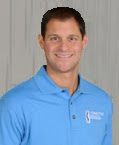
Stretch to Avoid Injuries
Athletes who stretch increase their flexibility and mobility, reduce injuries, enhance coordination, and speed up the healing process. Daily stretching, both before and after physical activity, is imperative. All muscle groups should be stretched, and each stretch should be held for a minimum of 15 to 20 seconds.
When an injury does occur, the first step is to evaluate how severe it is. If the injury is a muscle strain, then ice and stretching are usually appropriate. Symptoms that are more severe, such as numbness, loss of sensory or motor control, and moderate to severe pain with loss of motion, can require evaluation by a chiropractor, doctor, or physical therapist. Several tools, including posture, range of motion, palpation, X-ray imaging, MRI, EMG/NCV (muscle and nerve studies), and muscle testing, assist health care professionals in assessing the severity of an injury and developing an appropriate course of treatment. Studies show that early movement of body areas with soft tissue injuries, including the neck in cases of whiplash, enhances the long-term function and can prevent disability.

Activity should be stopped immediately when damage occurs. After the injury begins to heal, passive range of motion exercises can be initiated (no muscle groups contracting to move the injured area), followed by active range of motion exercises (muscles being used to improve functional motion). Common remedies for simple injuries, such as strains and sprains, include implementing immediate first aid therapy prompted by the acronym "RICE":
• Rest – Prevent further injury and restore energy that fosters the healing process.
• Ice – Reduce pain, edema (fluid build-up) and related swelling, and limit blood flow in the injured area. When applying ice, make sure that the application is no longer than 20
minutes at a time, every few hours, and not directly to the skin.
• Compression – Reduces swelling, supports the injured area, and may relieve pain. An ACE bandage is a useful compression tool, if available.
• Elevation – Reduces bleeding and swelling and is most effective if the injured area is
elevated above the level of the heart (for example, raising an injured ankle with pillows while lying on a flat surface).
According to famous athlete Jerry Rice (any similarity between last name and the previous treatment principle is a coincidence!), professional care for sports injuries is essential. Rice, who helped the San Francisco 49ers win three Super Bowl Championships and is viewed by many as the greatest wide receiver ever to play, has said, “Chiropractic care was key to keeping me in the game.” Of the 32 NFL teams, 31 have a chiropractor on staff. During Super Bowl XXIII, several 49ers were hurt, and Rice praised his chiropractor for assisting. According to Rice, “Ever since then, I’ve had the benefit of chiropractic care.”

Renowned bicyclist Lance Armstrong, seven-time winner of the Tour de France has stated, “I couldn’t have won without my chiropractor. He is possibly the most important man on the team.” Although all of these sports figures are career athletes, the same issues apply to nonprofessionals.

